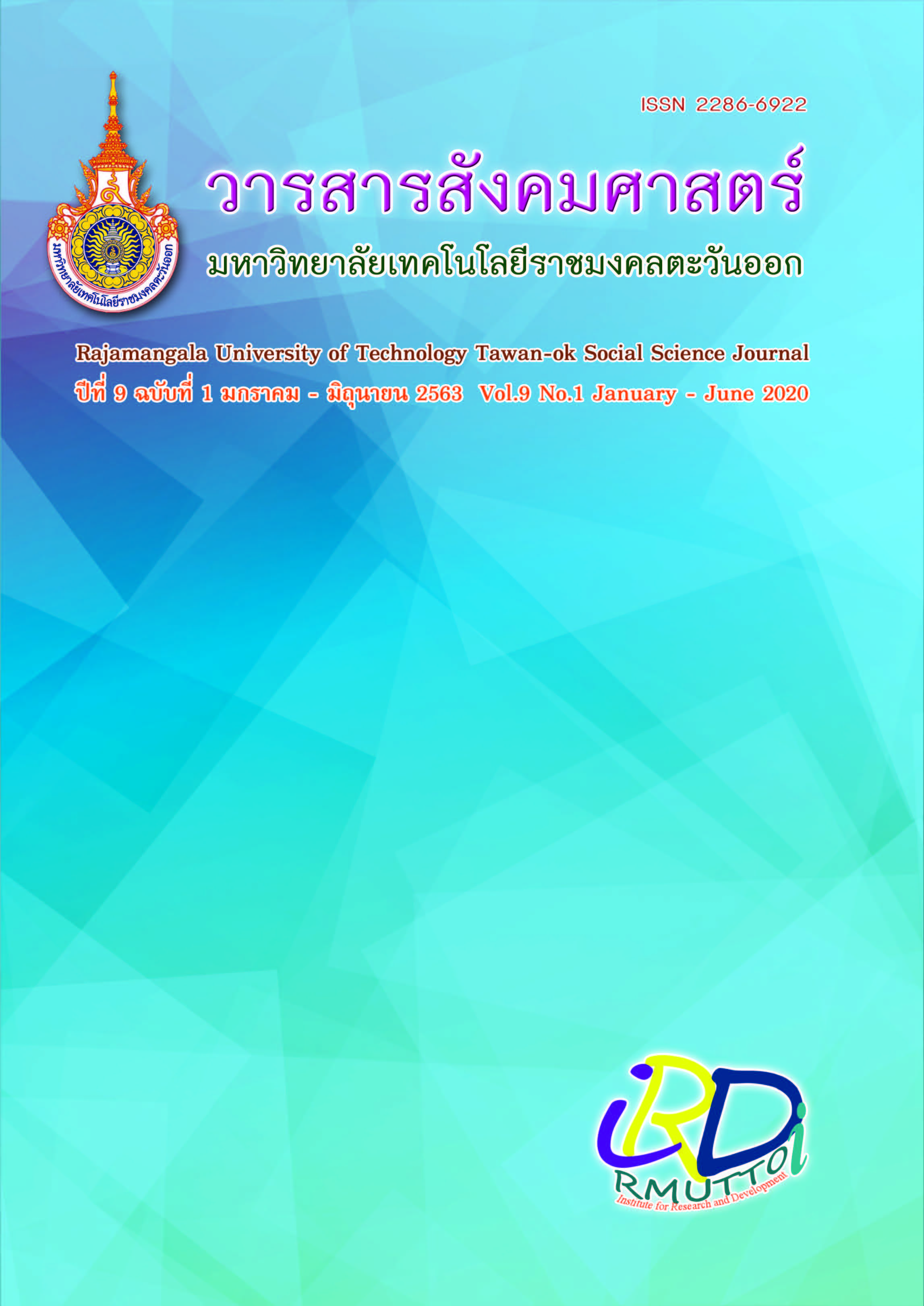Analysis of demographic data of the offenders and case data of narcotics cases in Ban Pong district in 2015
Main Article Content
Abstract
Widespread illicit drugs continue to be a major problem in Thailand. As can be seen in the media, drugs not only affect the users but also the communities at large as they are frequently associated with violence and serious crimes. Analysis of drug cases would enable the drug control authorities to have a better understanding of the problem and to formulate the drug policy. In this study, data were extracted from police files of drug cases (957) in Ban Pong district in 2015. This data set was composed of offenders’ demographic data, their crime history, charged offences, types of drug seized and arrest locations. The data were presented as frequencies and percentages. Statistical analyses were carried out with Pearson chi-square test, odds ratio and Pearson correlation. The offence cases were categorized into two groups of drug use (646, 67.5%) and drug possession or distribution (311, 32.5%). Almost all of the cases involved methamphetamine (902, 94.3%) which was classified as narcotics of category I according to narcotics act whereas the substances found in the remaining cases were marijuana or kratom (Mitragyna speciosa) (55, 5.7%) which was the narcotics in category V. A large number of offenders (632, 66.0%) were domiciled in Ban Pong district and they were predominantly male (808, 84.4%). The mean age range of the offenders in both genders was 30-35 years. More than half of the offenders (547, 57.2%) had a past history of drug offence. There was a moderately strong correlation (r = 0.89) between the population density and case density (number of cases per area) of the arrest locations. The proportions of offenders aged over 21 years who were charged with drug use and drug possession or distribution were significantly higher than those of younger offenders (p-value < 0.001). However, the odds on drug possession or distribution compared to drug use for the adolescent offenders was 1.93 (95% CI, 1.31-2.84) times that for the group of older offenders. The percentages of offenders of drug use that had primary and secondary educations were significantly higher than those of the offenders in other groups of educational level (p-value < 0.001 for the two levels). Eighty-five percent (547) of the drug users and seventy percent (219) of the offenders charged with drug possession or distribution were wageworkers, which were significantly different from the percentages of the two cases for other occupation groups (p-value < 0.001 for both cases of drug offence) and the odds ratio on drug use for the wageworkers compared to other occupations was 2.31 (95% CI, 1.68-3.21). In conclusion, this study has revealed the linkages between several socioeconomic factors and drug offences. It is hoped that the findings may provide useful insights into some aspects of drug problem despite the limitation of data used in the analysis.
Article Details
References
กิตติวงค์ สาสวด และปรีชา ดิลกวุฒิสิทธิ์. 2559. การพัฒนารูปแบบการป้องกันการแพร่ระบาดของยาเสพติดในกลุ่มเด็กและเยาวชนในเขตพื้นที่เทศบาล อำเภอเมือง จังหวัดฉะเชิงเทรา. ฉะเชิงเทรา : มหาวิทยาลัยราชภัฏราชนครินทร์.
คม เหล่าบุตรสา. 2557. ปัจจัยที่มีผลต่อการเสพยาเสพติดของผู้ต้องหาในคดีเสพยาเสพติดประเภท 1 (ยาบ้า) ในพื้นที่สถานีตำรวจภูธรสำโรงเหนือ. บัณฑิตวิทยาลัย มหาวิทยาลัยรังสิต.
กระทรวงยุติธรรม. 2562. รมว.ยธ. แจงแผนปฏิบัติการป้องกัน ปราบปราม บำบัดรักษายาเสพติด ปี 62 สั่งทุกส่วนเร่งแก้ปัญหายาเสพติด. เข้าถึงเมื่อ 25 มกราคม. เข้าถึงได้จาก https://www.moj.go.th/view/23583
ธีรไนย ศรีธรรมรงค์. 2559. การประเมินพื้นที่เสี่ยงการเกิดอาชญากรรมด้วยการวิเคราะห์สถิติเชิงพื้นที่. สาขาวิชาวิทยาศาสตร์สิ่งแวดล้อมภาควิชาวิทยาศาสตร์สิ่งแวดล้อมบัณฑิตวิทยาลัย มหาวิทยาลัยศิลปากรปีการศึกษา.
ปิยะชัย ถิ่นไทยงาม. 2560. พื้นที่เสี่ยงของอาชญากรรมที่เกี่ยวกับทรัพย์ ในอำเภอเมือง จังหวัดพิษณุโลก. ภาควิชาทรัพยากรธรรมชาติและสิ่งแวดล้อม คณะเกษตรศาสตร์ ทรัพยากรธรรมชาติและสิ่งแวดล้อม มหาวิทยาลัยนเรศวร.
พรรษมณฑ์ ศรีนวลนัด. 2561. ตราบาปนักโทษยาเสพติด. วารสารรังสิตบัณฑิตศึกษาในกลุ่มธุรกิจและสังคมศาสตร์. ปีที่ 4. ฉบับที่ 2.
ภัทระ เหล่ามีผล. 2558. ปัญหาและอุปสรรคการดาเนินงานด้านการป้องกันและปราบปรามยาเสพติดของเจ้าหน้าที่ตำรวจ ของสถานีตำรวจภูธรในจังหวัดปทุมธานี. รัฐศาสตรมหาบัณฑิต (การเมืองการปกครอง) สาขาวิชาการเมืองการปกครองสำหรับนักบริหาร คณะรัฐศาสตร์ มหาวิทยาลัยธรรมศาสตร์.
รอซีดะห์ มะสะแม. 2553. การใช้ยาเสพติดของผู้ติดสารเสพติดของศูนย์บำบัดรักษายาเสพติด จังหวัดปัตตานี. สาขาวิชารัฐประศาสนศาสตร์ มหาวิทยาลัยสงขลานครินทร์.
ศิริลักษณ์ ปัญญา. 2560. ศึกษาปัจจัยเสี่ยงของการกลับไปใช้ยาเสพติดซ้ำของผู้รับการบำบัดยาเสพติดในศูนย์ฟื้นฟูสมรรถภาพผู้ติดยาเสพติดแห่งหนึ่งในภาคตะวันออกเฉียงเหนือ. การประชุมวิชาการและนำเสนอผลงานวิจัยระดับชาติ ราชธานีวิชาการ ครั้งที่ 2.
ศูนย์อำนวยการป้องกันและปราบปรามยาเสพติด (ศอ.ปส.). 2550. เอกสารโครงการปฏิบัติการรวมพลัง ไทยเทิดไท้องค์ภูมิพล เฉลิมฉลอง 80 พรรษา.
สำนักงานคณะกรรมการป้องกันและปราบปรามยาเสพติด. 2559. รายงานสถานการณ์ยาเสพติด. สำนักงานคณะกรรมการป้องกันและปราบปรามยาเสพติด.
สำนักงานคณะกรรมการป้องกันและปราบปรามยาเสพติด. 2561. นโยบายการดำเนินงานป้องกันและแก้ไขปัญหายาเสพติด ปี 2561. แผนประชารัฐร่วมใจ ปลอดภัยยาเสพติด.
สุปราณี สูงแข็ง. 2559. ปัจจัยที่มีผลต่อคุณภาพชีวิตของผู้ผ่านการบำบัดในหน่วยบริการระดับปฐมภูมิ ในจังหวัดอุดรธานี. วารสารวิชาการสาธารณสุข ปีที่ 25, ฉบับที่ 2.
อรพรร แซ่เอี้ยว. 2561. สถานการณ์และแนวทางในการแก้ปัญหายาเสพติดอาเซียน : ประเทศไทย. ฝ่ายอาเซียนและกิจการต่างประเทศ สำนักงานคณะกรรมการกฤษฎีกา
N.Messedia and other. 2015. Profile of Tunisian Population of Drug Addicts. European Psychiatry 30: 1092.
Simone Pettigrewa and other. 2017. Common and differential factors associated with abstinence
and poly drug use among Australian adolescents. International Journal of Drug Policy 50 :41-47.


